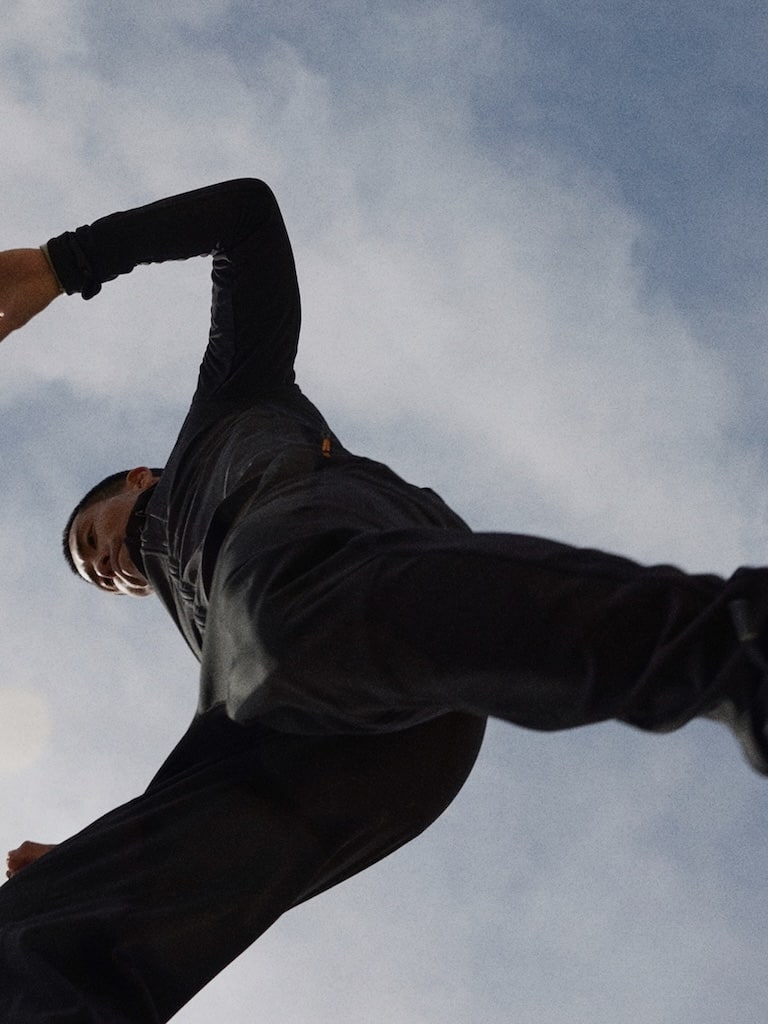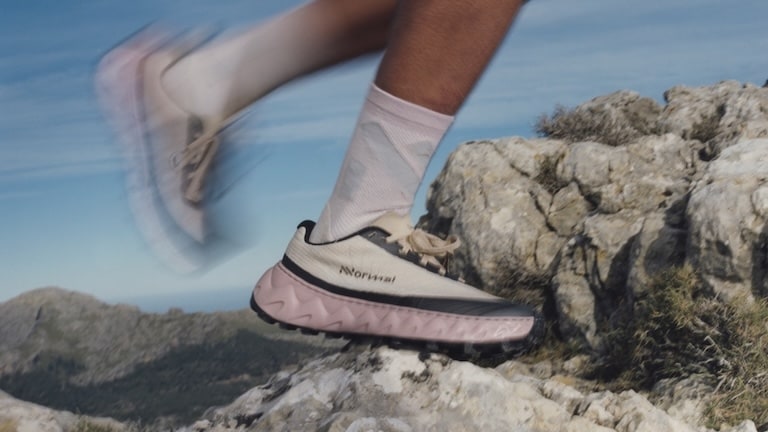
The importance of cushioning in running shoes

Cushioning plays a vital role in running shoes for runners of all levels, from beginners to seasoned athletes. Its primary function is to absorb the shock of each stride, reducing the strain on your joints and enhancing running efficiency. With the right cushioning, you can not only lower the risk of injuries but also boost your performance by ensuring a more comfortable and stable run. In this article from NNormal’s Outdoor Guide, we’ll cover everything you need to know about cushioning in running shoes: the different types available, top picks, and how to choose the best option based on your running profile.

What is cushioning and why is it important?
Cushioning describes a shoe’s capability to absorb and disperse the impact forces created during running. With every footstrike, a significant force is generated, and without effective shock absorption, this stress can build up, affecting the joints and muscles. Proper cushioning helps to soften this impact, lowering the risk of common injuries like plantar fasciitis, tendonitis, and knee pain. Though many see cushioning as just a comfort feature, its benefits extend far beyond that. A solid understanding of how cushioning works can play a key role in preventing discomfort and reducing the likelihood of injury.
Types of cushioning in running shoes
There are different levels of cushioning tailored to meet the needs and preferences of every runner:
Light cushioning
Light cushioning is a popular choice for runners who want a more direct feel of the ground beneath them. It provides a heightened sense of connection, enhancing sensitivity and responsiveness with each step. This type of cushioning offers better control over foot placement and allows for quicker transitions, making it a top pick for those focused on speed training or shorter, faster runs. Additionally, the lightweight build reduces energy expenditure, delivering a more natural and fluid running experience.
Shoes with light cushioning are ideal for experienced runners with efficient form, looking to boost performance in short to mid-distance races. However, beginner runners who prefer a closer feel to the ground and have strong leg muscles can also benefit. The main advantages include better performance in shorter races and increased agility, particularly on flat surfaces.
Moderate cushioning
Moderate cushioning offers an ideal blend of protection and responsiveness, delivering a balanced experience for runners. It provides enough shock absorption to shield the joints while preserving the ground feel that many runners appreciate. This type of cushioning suits a wide range of runners, regardless of skill level, and performs well across various distances—from short sprints and training sessions to marathons and moderate trail runs.
For those seeking versatile footwear, moderate cushioning is a reliable choice. It effectively absorbs impact, lowering the risk of injuries while ensuring stability and control. The benefits include a smooth, comfortable run with sufficient joint protection and seamless transitions. Regular runners who need a shoe that can handle both training and racing will find moderate cushioning to be a dependable, all-around option.
Maximum cushioning
Maximum cushioning shoes are the go-to choice for runners who need enhanced impact absorption and superior comfort with every stride. These shoes feature thick midsoles and advanced materials designed to deliver top-tier protection and support. They are particularly recommended for long-distance runners, marathoners, and those who frequently train on hard surfaces like asphalt or concrete. They are also an excellent option for heavier runners, as the increased cushioning helps evenly distribute impact forces, reducing pressure on the joints and lowering the risk of injury.
The key benefit of maximum cushioning lies in its exceptional shock absorption, which reduces muscle and joint fatigue during extended runs. This leads to a more comfortable and sustainable experience over long distances. Additional advantages include improved support for the knees and lower back, as well as reduced pain from repetitive impact. Even beginner runners can benefit from maximum cushioning, as it provides added stability and helps alleviate fatigue during longer training sessions, offering an extra layer of protection and comfort.

Cushioning in trail running
In trail running, cushioning plays a critical role due to the unpredictable terrain and uneven surfaces. Proper cushioning not only helps absorb impact but also enhances stability and grip on technical trails. For trail shoes, it’s vital to strike the right balance between cushioning and ground feel, ensuring enough protection without sacrificing the sensitivity needed to navigate rocky and uneven paths effectively.
Cushioning technologies in NNormal shoes
NNormal’s trail running shoes integrate advanced cushioning technologies in its models to deliver optimal comfort and performance:
EExpure midsole: Featured in models like the Tomir 2.0, this technology emphasizes both cushioning and rebound, providing a smooth, efficient stride across diverse terrains. It enhances shock absorption while maintaining a natural ground feel, reducing the shoe's weight, and offering exceptional responsiveness.
Vibram Megagrip Litebase outsole: Found in the Kjerag model, this outsole provides outstanding grip and durability, ensuring stability in challenging conditions. The Vibram® Litebase outsole reduces overall weight by 30% due to a 50% reduction in thickness, while still maintaining excellent durability and grip with its 3.5 mm lugs. This design keeps the Kjerag incredibly lightweight, at just 200 grams in size 42, without sacrificing traction on tough terrain. Additionally, the EExpure foam midsole offers enhanced cushioning and responsiveness tailored for trail running. This next-generation foam ensures close ground contact, boosting propulsion and compression with every step. Its 6 mm drop helps align the runner’s posture, encouraging a more natural stride while reducing the risk of slips and blisters, resulting in a safer, more comfortable experience even during long-distance runs.
Benefits of proper cushioning
Choosing the right cushioning in running shoes comes with several key benefits:
Reduced risk of injury: Proper cushioning absorbs impact, easing the strain on joints and muscles and helping to prevent common running-related injuries.
Enhanced performance: Good cushioning ensures smoother transitions with each step, improving energy efficiency and allowing for a more fluid running experience.
Greater comfort: Increased comfort helps runners stay focused on their technique and goals, minimizing distractions caused by pain or discomfort.
Considerations when choosing the right cushioning
When choosing running shoes, several factors should be taken into account:
Runner’s weight: Heavier runners can benefit from shoes with more substantial cushioning to better absorb the increased impact.
Foot strike type: Understanding whether your foot strike is neutral, pronated, or supinated will help you select the cushioning that best meets your specific needs.
Typical terrain: If you frequently run on trails, opt for shoes with cushioning that offer both protection and stability on uneven, technical surfaces.
Cushioning is a crucial element in running shoes, significantly impacting both your health and performance. Opting for shoes with the right level of cushioning—such as NNormal trail running shoes that are equipped with advanced technologies—ensures a safer, more comfortable, and efficient running experience. Whether you are just starting out or are an experienced runner, investing in properly cushioned footwear is key to maximizing your enjoyment of the sport and reaching your personal goals.
Photography: Nick Danielson
Share with a friend
Your NNormal shoes come with a free gift!